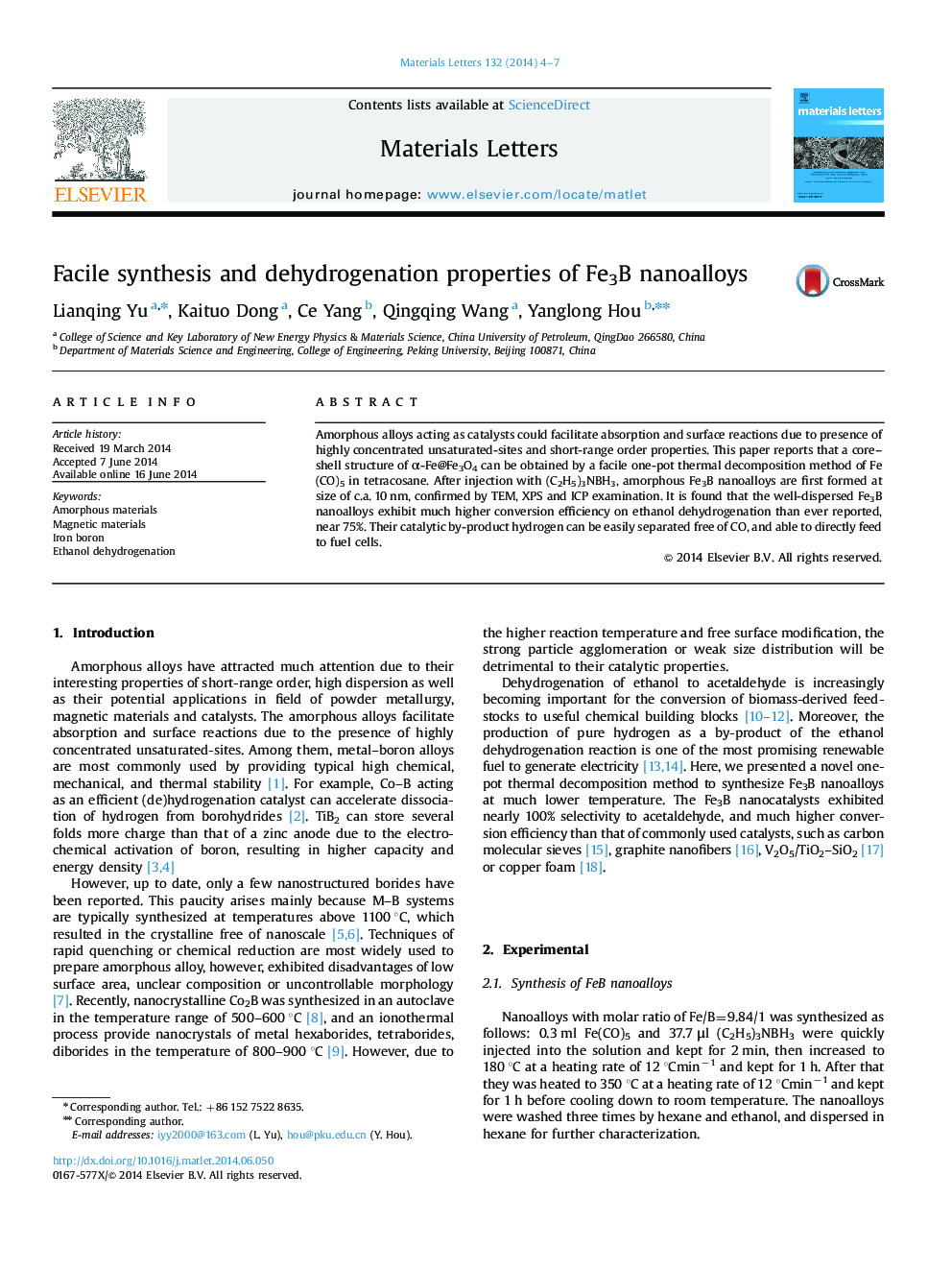| Article ID | Journal | Published Year | Pages | File Type |
|---|---|---|---|---|
| 1643878 | Materials Letters | 2014 | 4 Pages |
•Amorphous Fe3B nanoalloys are formed by the one-pot thermal decomposition method.•Core–shell structure of α-Fe@Fe3O4 obtained.•Fe3B catalysts exhibit higher conversion efficiency on ethanol dehydrogenation.•Catalytic by-product hydrogen can be easily separated free of CO.
Amorphous alloys acting as catalysts could facilitate absorption and surface reactions due to presence of highly concentrated unsaturated-sites and short-range order properties. This paper reports that a core–shell structure of α-Fe@Fe3O4 can be obtained by a facile one-pot thermal decomposition method of Fe(CO)5 in tetracosane. After injection with (C2H5)3NBH3, amorphous Fe3B nanoalloys are first formed at size of c.a. 10 nm, confirmed by TEM, XPS and ICP examination. It is found that the well-dispersed Fe3B nanoalloys exhibit much higher conversion efficiency on ethanol dehydrogenation than ever reported, near 75%. Their catalytic by-product hydrogen can be easily separated free of CO, and able to directly feed to fuel cells.
Graphical abstractFigure optionsDownload full-size imageDownload as PowerPoint slide
